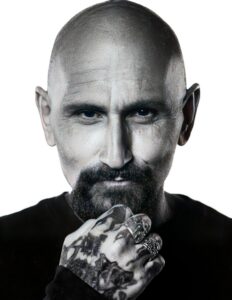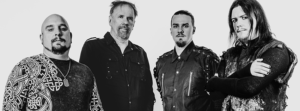STEVE HILLAGE – The psychedelic pioneer
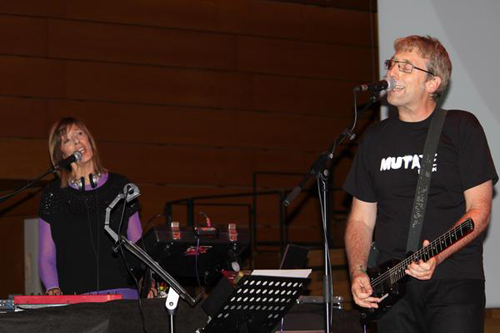

1. By being a part of that movement, what do you remember from the famous Canterbury music scene?
It was an exciting and very creative time. We had the shared feeling of being part of a special and original English musical movement that also expressed our sense of humour and eccentricities.
2. Did you finish your studies at the University of Kent in Canterbury?
No I just did part 1 of my course. I left after 15 months.
3. In early 1971 you formed Khan. What were reasons that the band did not last so long?
I was young and under a lot of pressure – and I felt I needed to play with other people before continuing as a solo artist. So I put Khan on hold while working on a second album and started playing with Kevin Ayers. My solo album Fish Rising that came out in 1975 was partly based around material I was developing for the second Khan album.
4. How did you join Gong?
My first contact with Gong was when Pip Pyle, who was initially playing drums with Khan, was invited to join them after doing some drum recording on Daevid Allen’s sola album Banana Moon. I became increasingly fascinated with the band and had a very nice meeting with Daevid in October 1972 in London. In December 1972 while doing a tour of France with Kevin I hooked up with Gong and we had a great jam session, so essentially I moved over from Kevin’s band to Gong by a magical osmosis.

5. What do you remember from your collaboration with them?
The 70s was a wild and intense roller coaster ride for me, from Khan, Kevin Ayers, to Gong and finally the Steve Hillage Band. I wrote and recorded many albums and played hundreds of live shows. I have many great memories, but a lot of it is a bit of a blur. Gong was a wonderful formative experience. It was a community of strong creative people and as such was quite combustible and unstable. But a lot of fun nonetheless.
6. Why you are not collaborating with Daevid Allen at the moment?
The creative cycle for Gong that started with the Uncon events in 2004-6 has now run its course. Daevid is a restless soul and he now wishes to pursue a creative route that I cannot follow. I wish him well, but I will not be playing with Gong in 2012.
7. How was your collaboration with Mike Oldfield for the Tubular Bells?
I effectively replaced Mike Oldfield in Kevin Ayers’ band, as he had left to make his solo album that became Tubular Bells. When we were making the Flying Teapot album with Gong we were sharing Virgin’s Manor Studios with him and so got to meet him. Later on in 1973 he invited me to play in the Tubular Bells live promotion, which was a lot of fun. No-one really expected Tubular Bells to be such a success – it just kinda snowballed after the first shows. Mike was quite shy about doing live shows at that time, and I replaced him for some orchestral Tubular Bells concerts in 1974.
8. Your solo career features an extensive use of keyboards. Was it a challenge for a rock guitarist back in the 70s?
I grew up as a musician at school with the keyboard player Dave Stewart (Egg, Hatfield and the North, National Health). We were in the same class and we made our first band together. So right from the beginning I was working with the combination of electric guitar and keyboards. As the 70s progressed and particular in Gong I got more and more involved in making my guitar work with synthesizers. This has become my speciality, and another factor that has led me to electronic dance music.
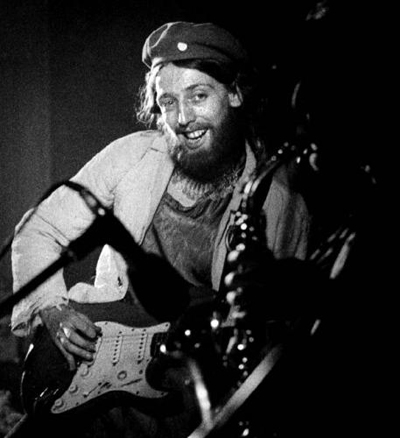
9. Your album Green in 1978 was produced by Pink Floyd’s Nick Mason. How easy or hard was to work with Nick Mason?
My first working with Nick was on the Gong album Shamal which he produced in 1975. This was at the time Miquette and I were leaving Gong but we still featured on a few tracks. We found him very relaxed and easy to work with, and of course full of knowledge of production techniques of the Pink Floyd. When a few years later I heard he was interested in working with me on one of my solo albums I leapt at the opportunity. I think Green came out very well.
10. During the 80s you worked as a producer for artists such as Charlatans, Simple Minds, Real Life and many more. How do you compare your work between playing as a musician and being a producer?
It’s a different kind of activity – and one I was always interested to do since the start of my career. Having been an artist myself and having been produced by some illustrious producers (who were also great teachers of record producing) it gives me a somewhat special perspective and empathy with the artist I am producing. Another advantage is that because I have made and continue to make lots of music myself I have my own creative outlet so I have no psychological need to impose my personal sound on the artist – it leaves me more free to focus on developing their own true musical personality – I want to bring out their sound, not mine…
11. What were your main duties as a producer?
As a record producer my main aim is to assist and guide the artist to make the best possible record for his career at the time, and also to provide a creative link between the artist’s aspirations and those of the record company. I’m quite hands-on in my approach and do a lot of the programming and quite a lot of the mixing myself, as well as supervising the sessions and generally managing the project. One of my producer heroes is George Martin of Beatles fame.
12. What do you remember from your collaboration with Simple Minds?
I remember quite a lot actually, in particular because I recently got back together with Jim and Charlie and did a couple of new tracks with them. In their current 5×5 tour format they are playing quite a few of the tracks I made with them in 1981.
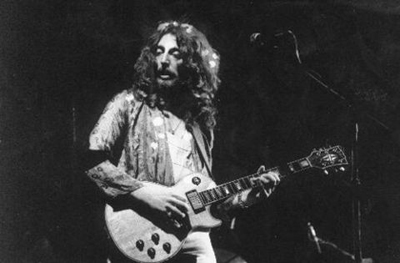
13. Your album Rainbow Dome Musick has been a trademark for the later explosion of the electronic music scene. How did you react when realized that your music was playing in ambient / chill out rooms?
The original “Rainbow Dome” for which the music was designed was in fact a chillout room at a large exhibition in London in 1979. One of the first ever chillout rooms actually. The Rainbow Dome Musick was played on a continual loop on a surround sound system. When it started to be played at the dance event chillout rooms later in the 80s it felt like a completely natural progression. This was one of the factors that led to us working with The Orb.
14. How did you decide to form System 7?
Our interest in electronic/dance music began in the 70s. We followed the development of Kraftwerk from their beginnings as an acoustic band through to being totally electronic. I have a strong memory of being in a disco club in 1978 when the DJ started playing Kraftwerk and all the people were dancing – I had a massive “I have seen the future” moment. Also in the 70s we developed a strong love for funk, and were big fans of Tonto’s Expanding Headband, which led to our working with Malcolm Cecil on the Motivation Radio album. I often think of “Ether Ships” on the Green album as the first System 7 track. We followed the whole development of the UK dance scene in the 80s and found our new musical home. Meeting Alex Paterson (The Orb) and hearing him DJing with Rainbow Dome Music was the final catalyst.
15. Do you think that the psychedelic techno of System 7 continues the tradition of the psychedelic rock that you used to play as a solo artist?
It’s important to understand that in the 1980s in the UK the psychedelic rock scene was pretty moribund, and a number of people who were involved in wider psychedelic culture gravitated towards the developing electronic dance music scene. We were part of this. This same thing occurred in the psychedelic community in Goa, eventually evolving to the style of dance music we call psy-trance. We in System 7 however, having evolved through the UK “rave” scene have a wider definition of psychedelic dance music. We are not a typical psy-trance band, although we often play at psy-trance festivals.
16. What is your involvement with mind and alpha waves music? I know that you have researched this scientific area of mind waves.
Miquette and I did an advanced bio-feedback course in 1976, which gave us quite a bit of knowledge about the various brain rhythm frequency bands and their associated activity. Of course as musicians we were interested in how these rhythm bands related to musical rhythms. The alpha rhythm band is between 7 and 12 cycled persecond. Alpha rhythms are associated with creative imagination and the dream state. 7-12hz corresponds to the 16 note hi-hat or sequencer pattern prevalent in most dance music. We think this is factor as to why the quite agreesive sounds of some dance music induce a trance-like state in the dancers.
17. Please let us know about your upcoming DVD release Live in Amsterdam 2006.
When we decided to make the Gong Family Unconvention event in Amsterdam we wanted this to be a major event encapsulating the history of Gong and the various solo projects of the principal Gong members. So I though it was good that I made a Steve Hillage Band set of material from my 70s solo albums. This was beautifully filmed and recorded and we are releasing this on our label on DVD and on CD. The CD has some special bonus tracks from the 70s and the DVD has extra interview and rehearsal footage.
18. What is your future plan regarding System 7 and Steve Hillage band?
We spend the last few months of 2012 in Asia and we are taking musical instruments for writing. We hope to write 3 new albums – System 7 – Mirror System (our chillout project) and a rock orientated album for the Steve Hillage Band. I already have a couple of new Steve Hillage Band song ideas that are good! Before we go we are releasing a System 7 EP called Passion and playing a special show in London on Oct 4th. We are also doing an interesting hybrid rock/electronic album with Japanese band Rovo called Phoenix Rising, recording that in Japan in September.
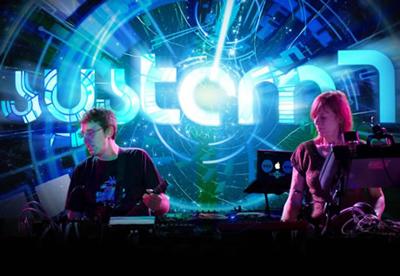
Information: http://www.a-wave.com/system7/

